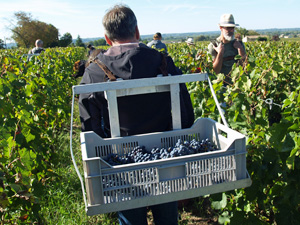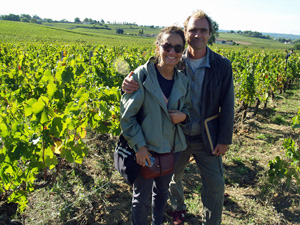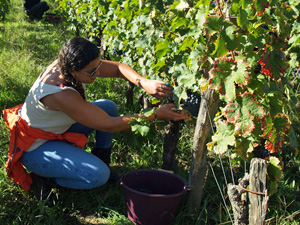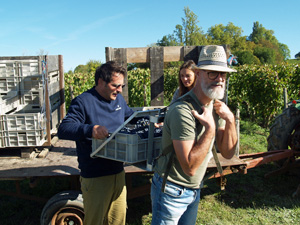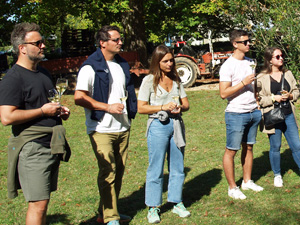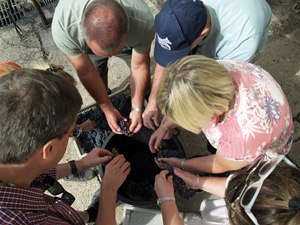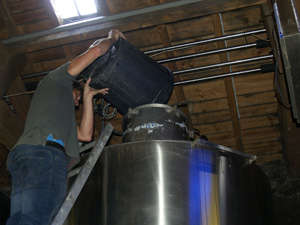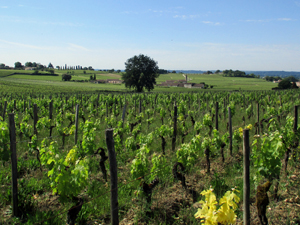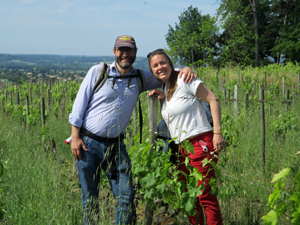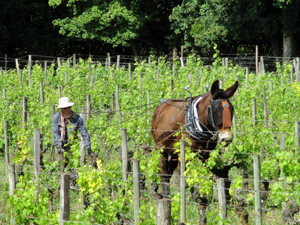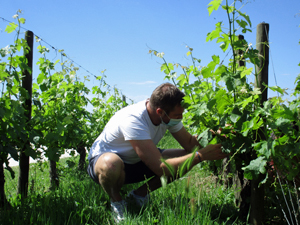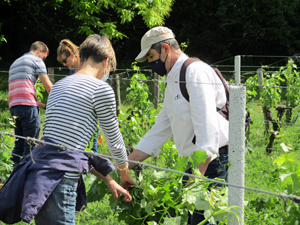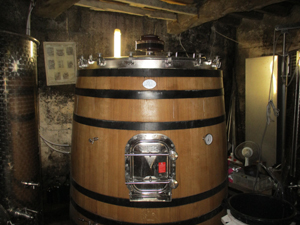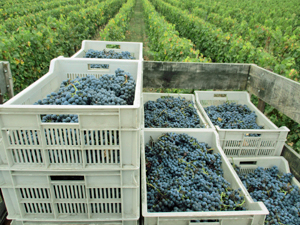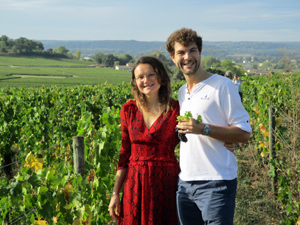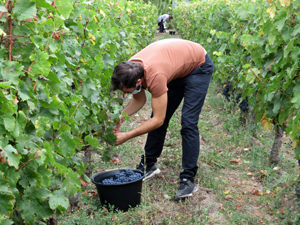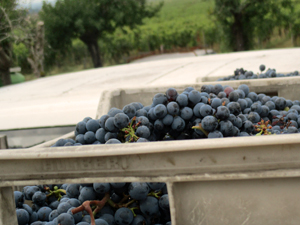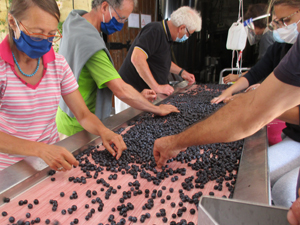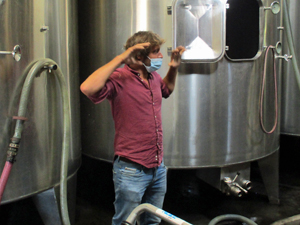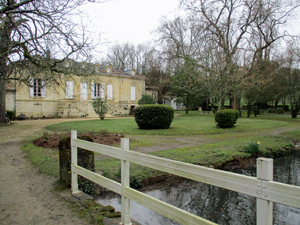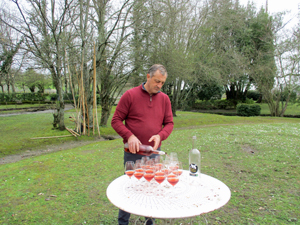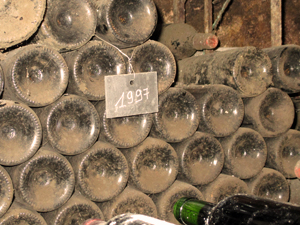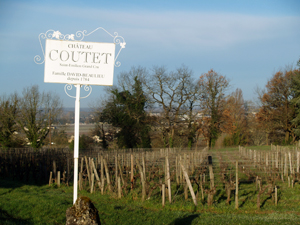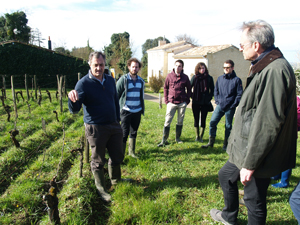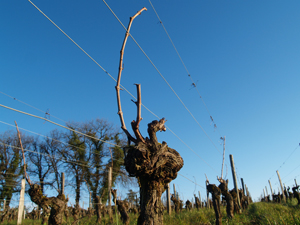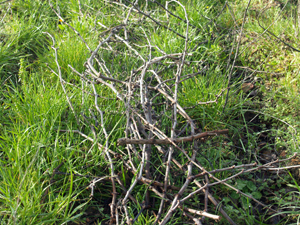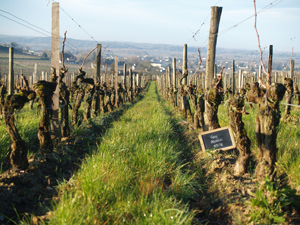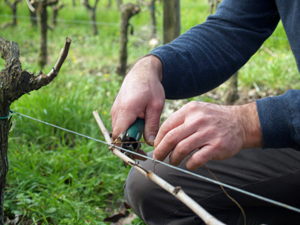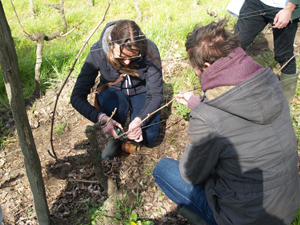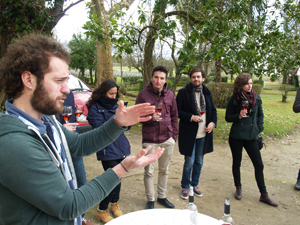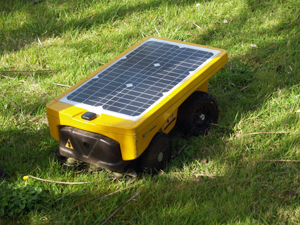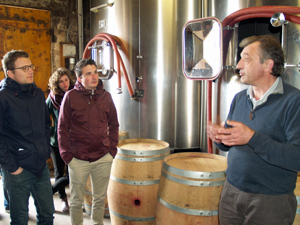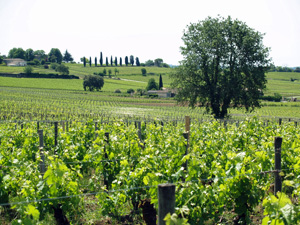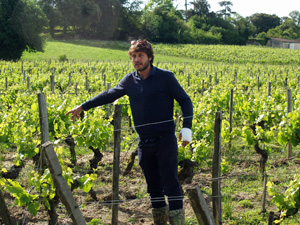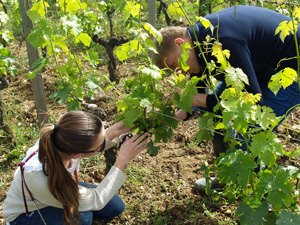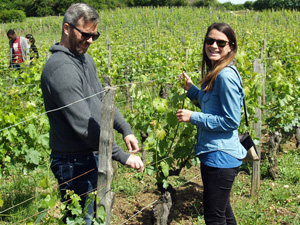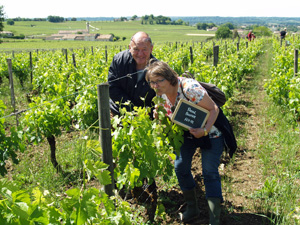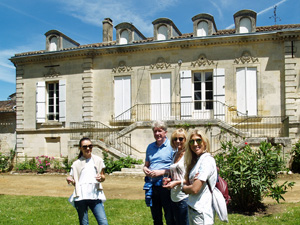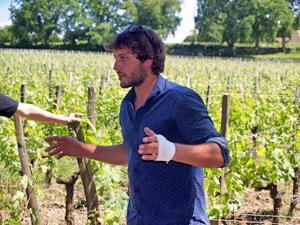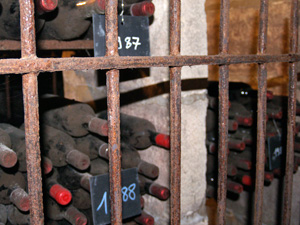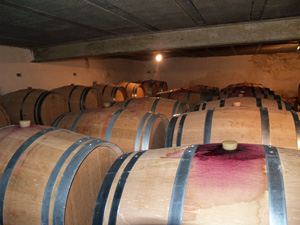Arriving at Château Coutet for the first time is always an adventure. Depending on the route that the satnav sends you, you can take the main entrance or the bumpy side tracks, it’s the charm of being in the countryside!
We started the Discovery Experience Day and our Wine Experience with a coffee and croissant, whilst Benoît, the Gourmet Odyssey oenologist, explained the programme for this day dedicated to learning about the work in the vineyard. We were then introduced to Alain David Beaulieu, the owner and winemaker at Château Coutet for the last 30 years. He is now helped by his son, Matthieu, and his nephew, Adrien. Château Coutet has been in the same family for 400 years and Alain is proud that his son and nephew will keep the tradition going for at least another generation.
Having put on our boots, the ground being particularly wet after the very rainy winter in Bordeaux, we started to explore the estate. Alain explained the different terroir and different grape varietals that make up the 16ha of the winery. It’s a magnificent place, preserved from intensive farming methods, and a large part of the family still live there amongst the geese, ducks and the two dogs, Largo and Wolfy, who seem to be perpetually looking for more affection. Wooded areas without vines are preserved to conserve the biodiversity, something that is very important in nurturing the vines organically.
We also discovered the latest invention from Alain’s brother, Xavier, the viti-rover. This is a solar-powered grass cutting robot used to keep the grass in check in some of the vineyard plots whilst disturbing the microbial life in the soil as little as possible. Grass is a fierce competitor for vines, and so it is vital to control its growth in order to make quality wines. In organic winemaking, only two options are available; cutting of turning the soil over.
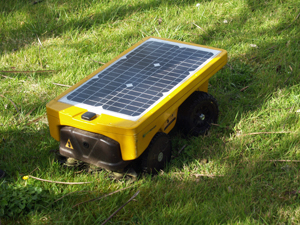
Having seen some of the Saint-Emilion half marathon runners pass though the vineyard, including Alain’s son, Matthieu, we made our way to the Peycocut vineyard where our adopted vines are located. It is one of the most prized spots in Saint-Emilion, lying on top of a magnificent limestone plateau. You can see the bell tower of the village church a few hundred metres further on. We searched for our adopted vines, in front of which Benoît had placed a name board. Many selfies and photos were taken with the vines, the most creative of which will have a chance of winning a magnum of wine in the My Vine photo competition.
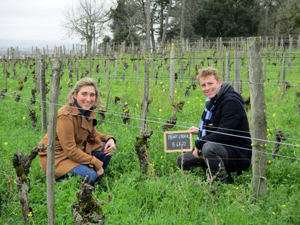
Time now for the serious business of the day as Alain explained vine pruning to us. There’s nothing like seeing it done to fully appreciate and understand the intricacies of this most important task. It will determine the future potential yield of the vines, and the shape that the plant will take as it grows. It’s a long job that takes from December until March. There is just a few hectares remaining to prune at Château Coutet, and luckily so, as the vines are starting to weep. When we prune the vines, the sap flows from the cut, and so we say it weeps. It’s also a sign that the sap has risen once again from the roots to the above ground part of the plant, and that the buds will soon start to appear.
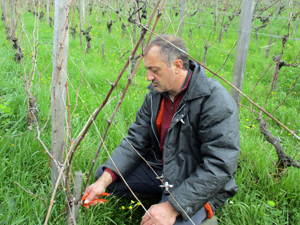
After pruning the vines, the cut branches need to be pulled away, and the remaining branch attached to the training wire. This was our task for the rest of the morning. From the attached branch, the future fruit-bearing canes will grow, and the grapes will appear later on in spring. It’s a delicate job, because depending on the position of the branch, it is more or less difficult to bend enough to touch the training wire. We were afraid to break them and thus compromise the number of grapes produced. In pairs, we made our way down the vine rows in the plot of merlot. It’s rewarding work, and we even found some wild leeks which would make a welcome addition to the salad at dinnertime!
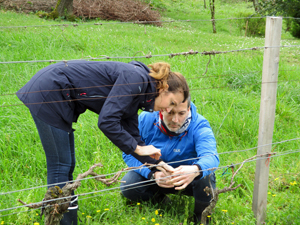
We then returned to the lawn in front of the chateau for the aperitif, just reward for our efforts! Alain served his Claret which is a surprising wine that can be classified between a rosé and a light red wine. It is obtained by drawing the wine off from the vat at harvest time after one day of macerating with the grape skins.
We continued the wine tasting over lunch. The 2016 Château Belles-Cimes wine accompanied the foie gras starter. It’s the winery’s second wine which is made mainly from the young vines on the estate. Its lighter touch refreshes the taste buds between two bites of foie gras. The 2016 Château Coutet, which is a blend of merlot, cabernet franc, malbec and cabernet sauvignon, is more powerful on the palate, but still with lots of elegance. It is also a blend of the three different terroir found at the winery of sandy, clay, and limestone soils, and paired wonderfully with the duck breast to taste another local specialty.
We then discovered the amazing story of the Emery wine. One of the oldest bottles of Bordeaux, found by Alain some 15 years ago in the earth floor of the family cellar. A plot of vines on the limestone plateau is now dedicated to producing a wine using the ancient techniques. No tractors roll across the vineyard, everything is done by hand or with the help of a horse to work the soil, and the very old bottle is reproduced by a master glassblower. Alain let us taste the 2017 vintage of the delicious Demoiselles cuvée, which is the same wine, just served in a more standard bottle. The limestone terroir and painstaking manual work bring a minerality and finesse to the tannic structure that you rarely have the chance to taste.
After lunch we set off for another walk, where Alain spoke to us about the organic methods they use to nurture the vines, and explained the different work that needs to be done on the vines during spring and summer before the harvest.
We finished the day with a visit to the family cellar which looks a little like Ali Babar’s cave with all of the old Château Coutet vintages. “Is 1967 the oldest?” “No, I think there are some 1953s over in that corner” replies Alain!
Many thanks for this really interesting day. We look forward to coming back to the winery for the Harvest Experience Day to discover the work that happens during this busy period.
